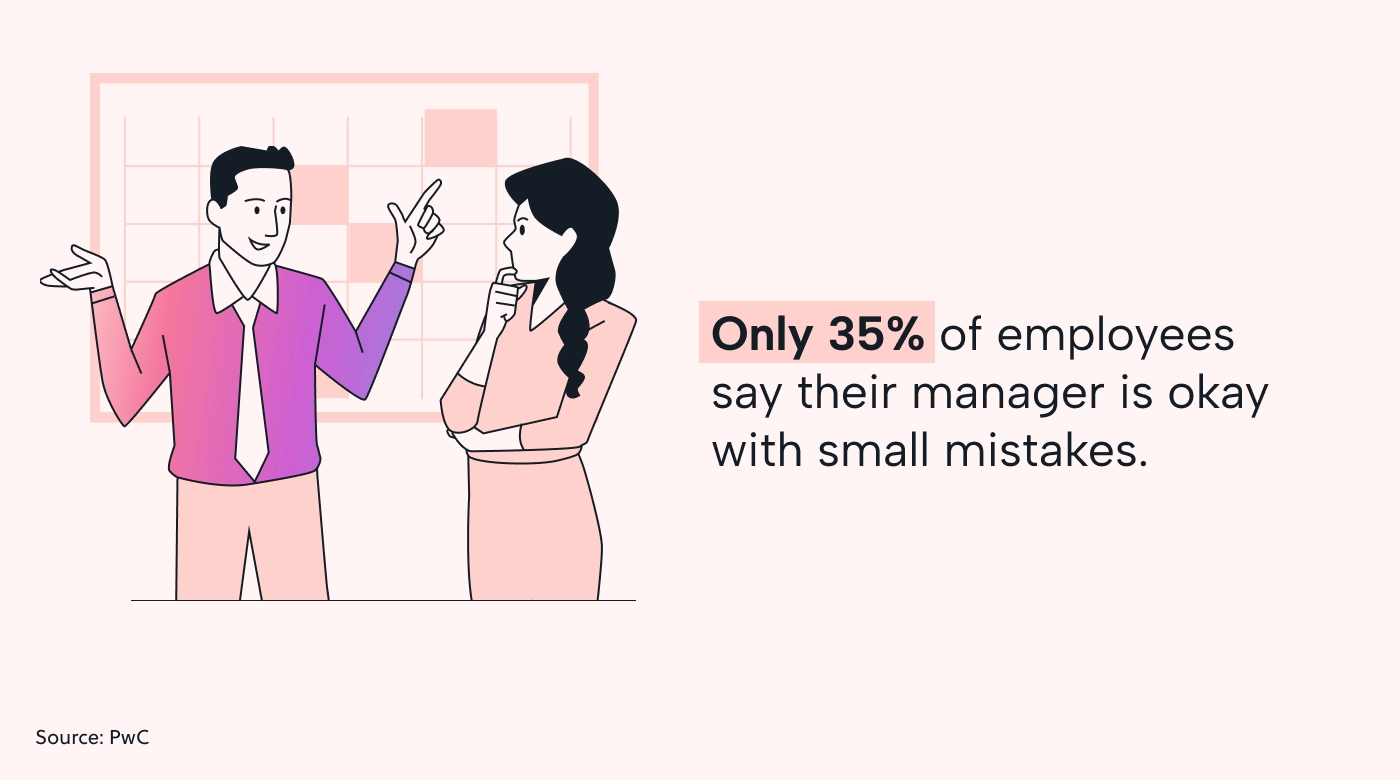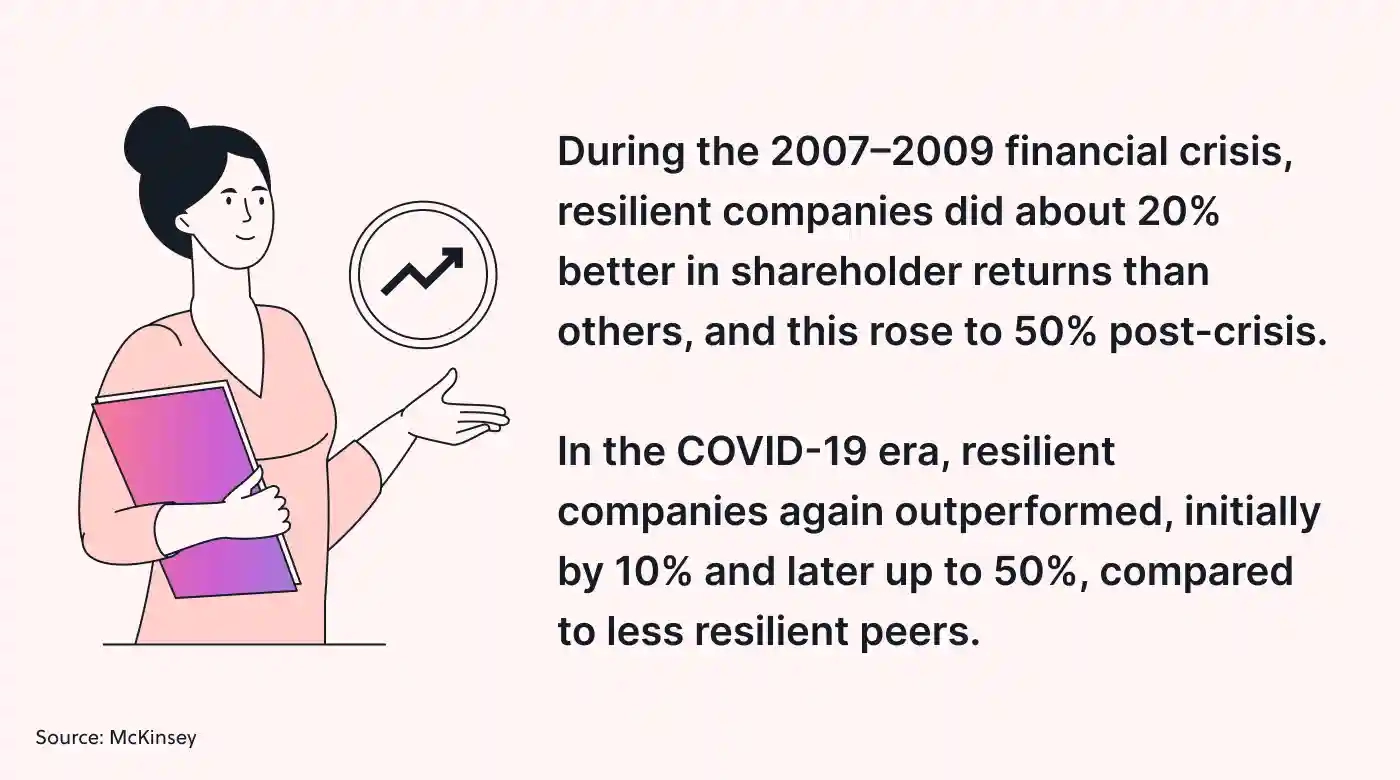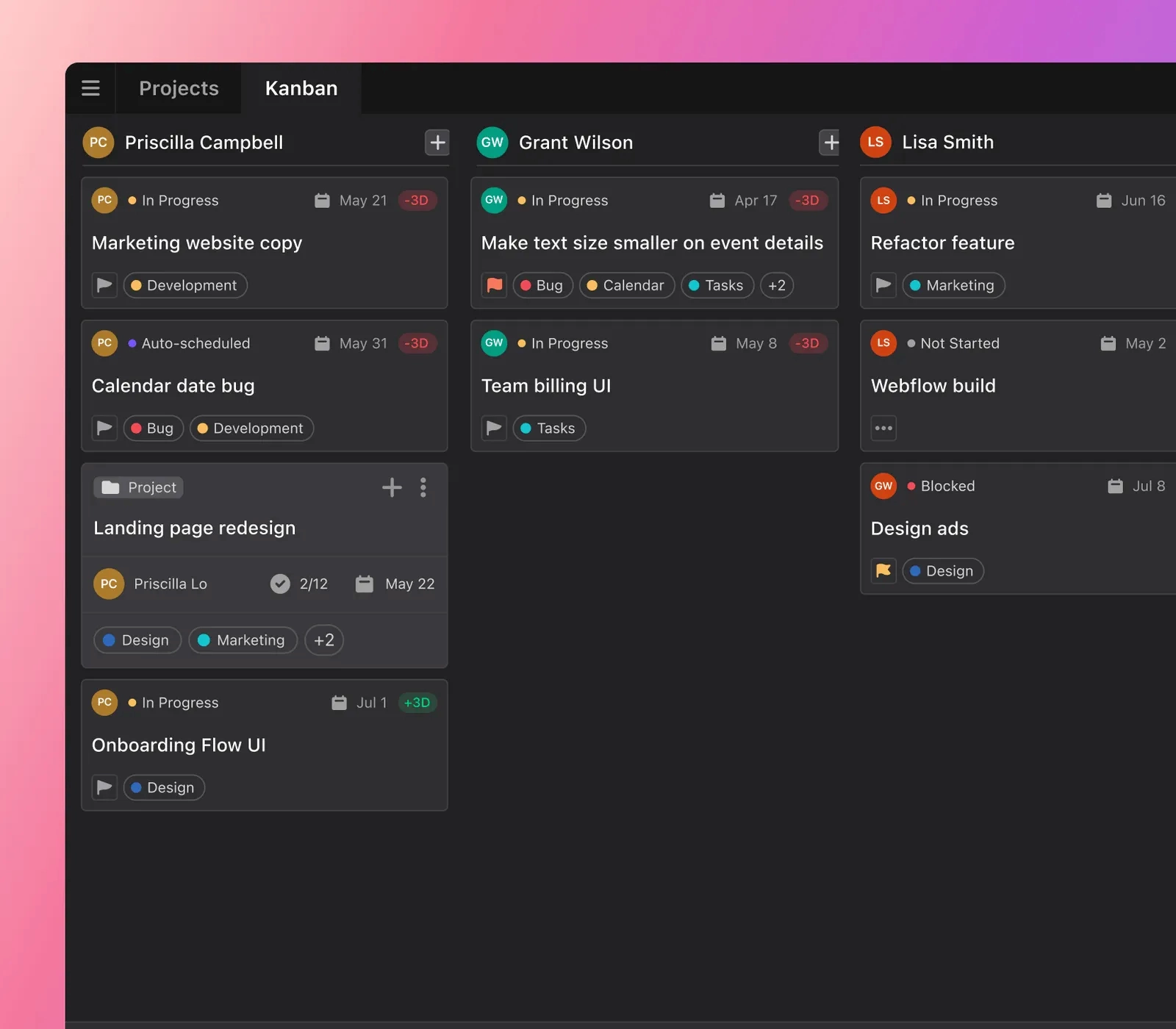Feeling like your company culture’s a bit… blah? Like that cup of coffee that’s been sitting out too long — not awful, but not sparking any joy, either. If you’re shooting for the stars, being the human equivalent of a shrug just won’t cut it.
What you really want is a high-performance culture where excellence is the norm, and the team’s energy rivals a live concert.
Shifting a company’s culture is like teaching an old dog new tricks — it’s not impossible, but it sure takes a lot of patience and committment.
So, can you really flip the script on your company’s culture? Absolutely. In this article, we show you how to turn that dream into a reality.
What is a high-performance culture?
Creating a high-performance culture means building a workplace that goes for the gold. It’s where aiming high, doing great work, and always improving are part of everyday life. Innovation isn’t just a buzzword, efficiency isn’t about cutting corners, and dedication is as essential as a morning coffee — driving employees to exceed their goals and expectations.
Why bother, though?
If you’re dreaming of a team that’s not just good but great, then the secret ingredient is right under your nose: culture.
Employees and teams that align with their company culture typically outperform those who don’t mesh well. Plus, when your core values also match those of your employees and clients, you get a competitive advantage.
Key characteristics of a high-performance culture
What elevates a high-performance culture above the low-performing or even average? It boils down to several core characteristics.
Here are the ones that truly set it apart:
Inspiring leadership
Leaders in a high-performance workplace are more than just figures of authority — they’re sources of inspiration and pillars of support. By embodying the company values and behaviors they hope to see, they set a powerful example for the entire team. It’s this kind of leadership that turns a group of individuals into a united, high-achieving team.

An empowered team
In a high-performance organizational culture, team members are trusted to call the shots on how best to reach their objectives. This trust fuels creativity and enables teams to adapt quickly when necessary.
Clear vision and goals
Organizations that perform well often have a well-defined mission and clear business goals that guide their efforts. These goals are ambitious, inspiring team members to stretch and grow. Plus, everyone knows exactly how they fit into the big picture, which brings a sense of purpose and direction to the whole team.
High standards
It only makes sense that in companies with a high-performing culture, standards are exceptionally high. Employees are encouraged to push beyond their personal limits and strive for excellence in everything they do. This includes the products they create, the service they deliver, and their interactions with each other and clients. They’re also recognized and rewarded for these things.
Accountability
Each team member is expected to own their actions and understand their impact on the organization. The goal isn’t to meet minimum standards but to excel in every task, and mistakes are seen as valuable lessons rather than failures.
Not sure how to foster ownership in your team? Try using a RACI chart.
Collaboration and teamwork
High-performing organizations kick the lone cowboy myth to the curb, valuing both solo stars and team collaboration. This environment champions a community vibe where sharing knowledge, skills, and resources is as normal as breathing.
The result? Everyone works together like a dream, chatting openly and pulling in the same direction.
Continuous improvement
Top-notch organizations never just coast; they're always leveling up. With a culture that embraces continuous learning, feedback loops, and smart systems, they’re on a perpetual quest to be quicker, smarter, and more efficient. A growth mindset helps, too.
Take, for instance, automating tedious planning tasks with Motion. Just tell Motion what you need to do, when, and what’s most important, and voilà, it uses AI to whip up the perfect schedule for you. It's ideal if you’re drowning in decisions, making sure you always stay on target.
Resilience and adaptability
High-performance cultures thrive on resilience and adaptability, ready to bounce back and seize opportunities — even in tough times.

This is a good thing since sticking to the "if it ain't broke, don't fix it" attitude can hold you back.
Research shows that even with motivated, productive employees, a company’s success won’t improve if team efforts aren’t aligned with strategic goals. Ultimately, being adaptable and focusing on what truly matters move the needle forward.
Benefits of a high-performance culture
What's in it for employees and employers when you cultivate a high-performance culture? A whole lot, as it turns out. Here’s a look at the top benefits that are too good to ignore:
For employees
- You look forward to Mondays because you love what you do. Your job satisfaction is through the roof.
- You get loads of chances to learn new things and grow.
- Your hard work gets noticed and rewarded.
- You work better as a team.
- The office is a place where you actually like showing up to work.
- You’ve got time for life outside of work, too.
For employers
- Your team’s getting more done and coming up with more innovative ideas than ever, driving employee performance up.
- Your people are happier, leading to improved employee engagement.
- Your turnover rates are down, and profits are up.
- Your business is a magnet for top talent.
- Your clients can’t help but rave about you. Happy employees make for happy customers, after all, and a team that believes in what they do delivers superior service. This creates unforgettable experiences for your clients, who become loyal fans.
How to create a high-performance culture
Creating a high-performance culture requires a blend of clear vision, strong leadership, and committed teamwork. Here’s how to set up an environment where excellence is the expectation, not the exception:
Lead by example
The cozy setting of small businesses means their leaders are in the perfect spot to be role models. Their unique position allows them to lead by example, creating personal bonds with employees and demonstrating what it means to commit to organizational values.

Think about it: if you're asking for hard work and top-notch performance, you've got to be the first to roll up your sleeves. Otherwise, your team might be put off by the double standard. Leadership’s behavior sets a powerful precedent for the entire organization, so make sure you light the way.
Set clear, achievable goals
For small businesses, where resources might be tight, knowing exactly what you're aiming for is essential. That means setting business goals that are lofty but still within reach — and line up with your overall strategy.
And here’s a pro tip: get your team in on the goal-setting action. That way, they're more likely to buy into the vision and understand how their contributions fit into the bigger picture.
Create a strong sense of community
In a tight-knit business setting, there's a golden opportunity to build a community that feels more like family — something larger corporations can only dream of. So, lean into it!
Regular team outings, open chats about where the business is headed, and toasting your collective achievements can all amplify this community vibe.
Just look at REI, where their team's shared love for nature binds them. They even shut their doors on Black Friday to give their team a well-deserved break and put the focus on people over profits.
This sense of unity is what sets a high-performance culture apart.
Keep communication open
Maintaining open lines of communication is vital.
Hold regular catch-ups where employees can share ideas and concerns, but don’t overdo it — no one loves a calendar clogged with meetings.
With Motion’s Meeting Assistant, you can optimize your meetings with ease. You can even use Siri for that quick “Hey Siri, schedule our team meeting” convenience.
Embrace an open-door approach, too — this is the cornerstone of building a workplace where honesty and mutual respect are the norm.
Implement agile and flexible processes
In both business and life, being quick on your feet can make all the difference.
Adopt lean methodologies that let you pivot fast and refine on the go so that you always stay in tune with market shifts or internal needs. Also, create an environment where new ideas are celebrated, and everyone is encouraged to suggest smarter ways of working.
With Motion’s Project Management tool, organizing tasks and deadlines becomes a breeze. As a result, your team stays agile.

Recognize and reward efforts
Quickly and personally acknowledging the hard work and success of your team can be an incredibly powerful motivator. So, whether it’s a heartfelt thank you, a financial perk, or a well-deserved promotion, make sure your appreciation is felt.
A word of caution, though: don't offer a meager discount on your pricey products or services as a "reward." If it’s out of reach financially, it misses the mark and feels hollow. Also, avoid praise for the sake of it. People know when recognition isn’t authentic, and it will dilute the impact of true praise.
Debunking high-performance culture myths
There are a lot of myths and misunderstandings about developing high-performing employees. Here are a few of the common ones:
Long hours equal more productivity
Think that working endless hours means you're more productive? Think again. Overworking leads to burnout and can even hurt the quality of what you produce.
High performance is really about being effective and getting results, not the hours spent doing a task. And as it turns out, employees are only truly productive for four hours and 12 minutes of the typical workday.
High pressure yields better results
Some believe that cranking up the pressure turns up performance. That’s not true. The best results come from environments that offer support and are just the right level of challenge.
Cutthroat competition is motivating
It’s easy to assume that a dog-eat-dog environment pushes everyone to do their best. However, it often damages teamwork and trust.

The best high-performing teams grow from collaboration and celebrating wins together, not from turning their colleagues into competitors.
Results are all that matters
While nailing those goals is important, there's more to success than the final scoreboard.
Obsessing over outcomes without minding the means can lead to dodgy shortcuts. In a real high-performance organization, the path you take to achieve those results is valued just as much.
One size fits all when it comes to strategy
Applying a blanket strategy to everyone, regardless of their unique abilities and challenges, isn’t just unhelpful — it’s counterproductive. Companies with a high-performance work culture know the value of customizing their approach and harnessing the unique qualities of each person and team to secure the best possible results.
Employee well-being isn’t a priority
Think high performance means skimping on personal time, health, or happiness? Big mistake. With over 25% of workers reporting unmanageable workloads and 52% facing high stress, it's clear — well-being can’t be an afterthought.
High-performance cultures thrive by keeping their teams healthy and happy, recognizing this is the real key to engagement and productivity.
Micromanaging is necessary for achieving excellence
Some bosses believe that keeping a tight grip on every detail is the way to uphold high standards. That’s false. Micromanaging can actually choke out creativity and drive. A true high-performance corporate culture comes from empowering staff and trusting them to own their roles.
Perform at your best with Motion
Let’s face it — no one thrives in a workspace that’s as dull as day-old coffee. Changing from a familiar yet stagnant environment to a high-performance culture might seem daunting, but guess what? You’re more than ready to make that leap.
So, what’s your next move? Lean into the challenge. By putting the strategies outlined above into action, you and your team aren’t just going to climb — you’re going to soar.
While you’re at it, why not let technology handle the heavy lifting? With Motion, your team stays on point, in the loop, and two steps ahead — all while saving everyone a precious two hours each day. Now that’s high performance!
Eager to see the difference? Sign up for a 7-day free trial of Motion today.

Benita is a wizard at breathing life into the dry and dense world of B2B SaaS. Bringing a fresh perspective to every piece, Benita turns exhaustive research into a delightful read, making even the most well-covered topics feel fresh and exciting. When she's not writing, you can find her collecting recipes and crocheting her own clothes.




